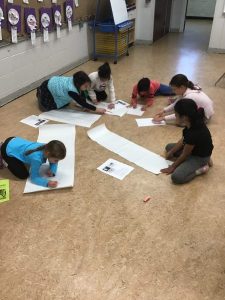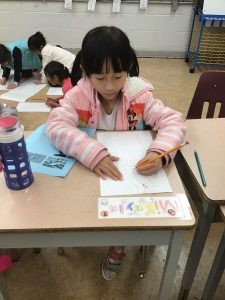
In Science we are learning All About Penguins! So far we have discovered the penguins’ habitat, diet, eating habits, order of the food chain, stages of the life cycle and the physical differences among the various species of penguins.
Today in Art we became an expert on a specific species of penguins. It is safe to say that Little Blue Penguin was by far the most popular species of penguin because they are so incredibly small and cute. Ask your young scientist + artist what penguin they chose to study. In Art today, we were bringing our Science to life and were beginning our life size sketch of our penguin of study. Stay tuned for any changes that occur outside our hallway as the March of Penguins may be taking place there in the coming weeks.


 Part 2: Today we moved from being able to identify the different types of energy to generating our very own list of objects that produce either heat, light or sound energy (sometimes more than one type of energy can be produced!). Let’s see if you can categorize the following ideas into the correct energy source: the shaking of a water bottle, glow in the dark toys, a rock splash in the lake, the wind, a baseboard heater, flashlight, a wolf howl, moonlight, train whistle and sunlight.
Part 2: Today we moved from being able to identify the different types of energy to generating our very own list of objects that produce either heat, light or sound energy (sometimes more than one type of energy can be produced!). Let’s see if you can categorize the following ideas into the correct energy source: the shaking of a water bottle, glow in the dark toys, a rock splash in the lake, the wind, a baseboard heater, flashlight, a wolf howl, moonlight, train whistle and sunlight.




